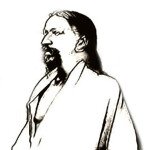An Approach and a Paradigm
A.P.J. Abdul Kalam, the President of India, identified five important areas to transform India from a developing country into a developed country: education and health care, agriculture, information and communication, infrastructure and critical technology. He traveled around the world and presented his vision for the future of the country. I feel this is a very good start for a conversation on how India can be developed and transformed not only as a developed nation, but as a leader of the world.
To my mind, a country can be approached as one would an organization or even as an individual. If that can be tentatively agreed upon, I find Maslow’s pyramid useful to talk about the holistic development of the organization or the nation. While I say this I am aware that a nation-state is a relatively modern phenomenon and that India is a relative new-born in terms of political independence. India as a civilization is perhaps the oldest surviving one on earth. As Iqbal poignantly noted, ancient Egypt, Rome and Greece could not sustain their original inspiration and unifying idea. Perhaps only China can be said to be sustaining somewhat its original civilization in some ways today.
Be that as it may, let us proceed with our exercise. If we apply the five layers of Maslow’s pyramid we can see it thus, moving from bottom to top:
1) Physical (security): This would be the most primal need of the country, not only externally but internally. That also means a structure of protection for its citizens and ensuring basic justice equally to all.
2) Higher Physical (infrastructure, utilities and necessities): These would entail an infrastructure of roads, highways, ports, airports, waterways, storage facilities, housing, rural and urban development, water and food supply, waste management, internet and broadband, etc.
3) Social and Psychological Development: As gross or sthoola needs are met, one moves to the subtle body of the nation. Here one would place health and education, development of natural resources in a recyclable manner, development of a civil discourse, communication and information systems along with learning management systems, etc.
4) Cultural and Individual Development: Here the individual is optimized, advanced, facilitated and given the environment so that his or her highest potential can be fulfilled. Civil discourse evolves to transparency, society develops a character and integrity, a deep-rooted civic sense and togetherness, higher technical advancements made available and researched with world-class systems and education, advanced disaster recovery and a state of physical and psychological health is achieved.
5) Self-Actualization: Every nation has a soul, as Sri Aurobindo pointed out. This is when the highest possibility of the nation, its guiding principle, its fundamental ‘idea’ begins to manifest as a reality and truth, its ritam. Here the leaders are awake to the nation’s soul and responsive to its people selflessly and consciously. Such a society becomes creative in tackling its challenges and turns its failures into opportunity, looks towards a wholesome and comprehensive transformation of every element of its constitution, secular or spiritual. Innovation becomes the norm and enterprise is organic. Citizens are happy, anandmaya, and there is a quiet but egoless pride or gaurav in one’s existence. Here, one has perhaps moved to what is called the kaarana, the causal nature of one’s existence, one’s svabhaava and svadharma, or what I call the core.
6) Self-Transcendence: Maslow, in his later years, modified the apex of his pyramid, inspired by Indian spirituality.
[Having met our basic needs at the bottom of the pyramid, having worked on our emotional needs in its middle and worked at achieving our potential, Maslow felt we needed to transcend thoughts of ourselves as islands. We had to see ourselves as part of the broader universe to develop the common priorities that can allow humankind to survive as a species. — Robby Berman]
Every state or nation has an underlying theme. We see this when we study Greece or Rome or Japanese culture. Same applies for India. While India may be defined as not one nation but many nations that are joined by a deep oneness, a connection that defies the intellect, it is also clear that many Western institutions cannot be imposed on our civilization without being India-genized.
The parliamentary democracy is one such institution where mobocracy or illiterocracy or corruptocracy has replaced meritocracy and sapio-cracy. Our present education is another that does not bring out our natural genius. Same for our health care and rural and urban development along with architecture and leadership development.
While this model is not fool-proof or perfect, I find it Indian in the sense that it mirrors that Upanishadic concept of three layers of our being, the gross, the subtle and the causal. Or, if we drill down further, we have five bodies, the annamaya or physical, the pranamaya or vital, the manomaya or mental, the vigyanamaya or higher or super-mental and the anandamaya or blissful. Each body needs proper attention, care and expression. But it is by realizing the highest and deepest body that our superficial or gross layers reach fulfilment and completion, poornta.
This then is my hypotheses, which should be openly critiqued and beat up. Perhaps in doing so we will realize that no single leader of the nation can single-handedly change us or elevate us. The potential lies in each one of us and until we are corrupt, selfish, petty and ignorant, we shall fail in being transformed. Then no Kalam or Modi can help us and we do not deserve them.
It might be well to remember that if any layer is compromised at any time, the whole nation or society no matter how elevated shall revert to it immediately. For example, when Uttar Pradesh was taken over by goonda-raj recently, there could be no talk of self-actualization or even a proper psychological or social discourse. The whole state reverted to a very basic survival mechanism where girls could be molested in daylight and goons could threaten shopkeepers for belonging to the wrong religion. Or when the Manmohan Singh government was wracked by one corruption scandal after another, there could be no consideration of citizen being anandamaya or vigyanamaya. If physical security is attacked then all talk of evolution to higher layers collapses.
For India to truly reach its self-realization, it will need to realize the spiritual in secular, the highest actualization in the external. No layer of development can be eschewed or ignored. India cannot retire in a post-Buddhistic phase of looking the world as dukkha-samsara or maya. It will need to undergo an integral transformation if it is to find its natural place in the world order.










